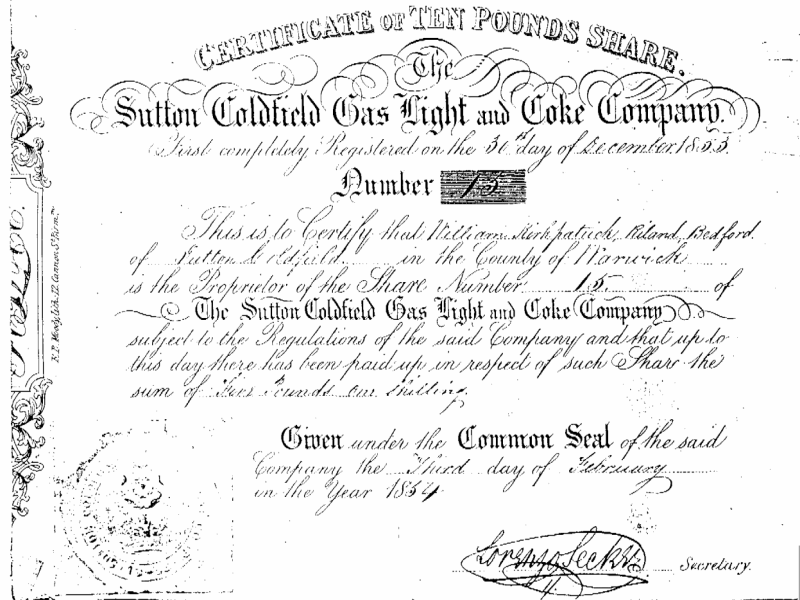A minute of a meeting of the Warden and Society of Sutton (i.e. the Corporation) held on September 29 1852 reads: “Mr. Wright, Mr. Bedford and Mr. Parker are deputed to confer with the Gas Committee as to the feasibility of aiding in establishing the gas works”. Most of the local towns already had gas lighting, and it was over fifty years since William Murdoch, the inventor of gas lighting, had first illuminated the entire Soho Manufactory (Boulton and Watt’s famous factory, less than ten miles away from Sutton) with gas lamps, so a gas works for Sutton Coldfield was long overdue.
The gas works was built on the corner of Riland Road and Coleshill Road, a site with a small stream running through it, then known as the “Workhouse Meadow at The Blabbs on the corner of Slash Lane”. This was Corporation land, and at their May 1853 meeting the Warden and Society resolved “That the Gas Committee have permission to take such portions of the gardens occupied by Birkenhead, Birch and others near the Blabbs as they may require for their works, the Company compensating the present tenants.” In September the corporation asked for a report on the best way of laying gas pipes to their property in the town - the Moot Hall (i.e. town hall which stood at the top of Mill Street), the Policeman’s House (half-way up Mill Street) and the School House (near the bottom of Mill Street.)
These proceedings show that people were confident that the works would go ahead, the Gas Committee had become a provisional company, and the Sutton Coldfield Gas Light and Coke Company was finally registered and issuing shares at the end of the year. Meanwhile preparations continued, and Mr. Parry was paid £36. 6s. 3d. for gas fittings at the Moot Hall, Town School and Gaol. When the gas was turned in November 1854, the event was marked by a firework display, following a public lecture about gas given in the Town Hall by Mr. George Bodington at the end of his term as Warden of the town. The first gaslights were in a few houses, at the Church, the police station, and four lights at the Town Hall (Moot Hall). This showed a lack of forward planning, as the Moot Hall was demolished as unsafe the next year, and shortly afterwards the policeman’s house was knocked down to make way for the new town hall to be built on the site (now the Masonic Hall.)
Sarah Holbeche’s house, where she lived with her sisters, was at the far end of High Street, where the railway bridge is now. It was November 1855 before she could record in her diary “Our first Gas Lights! Helen’s donation to the house,” the money coming from the sale of her sister Helen’s pet lamb. (Based on “History of Gas in Sutton Coldfield” by Alan Howells, available from

